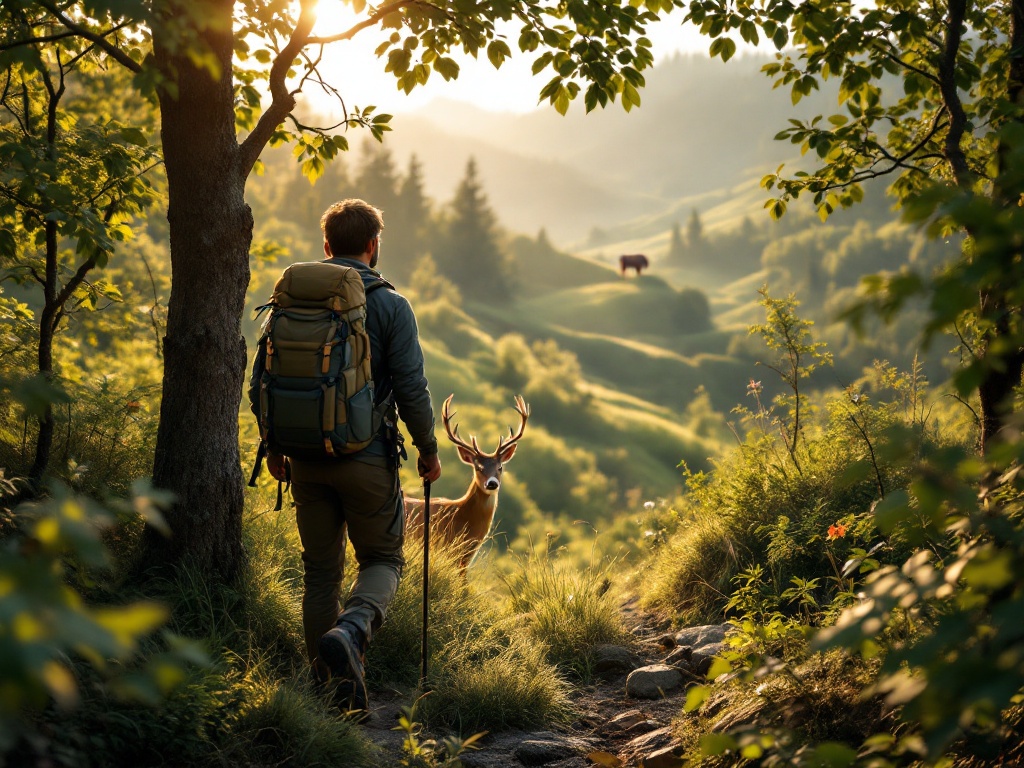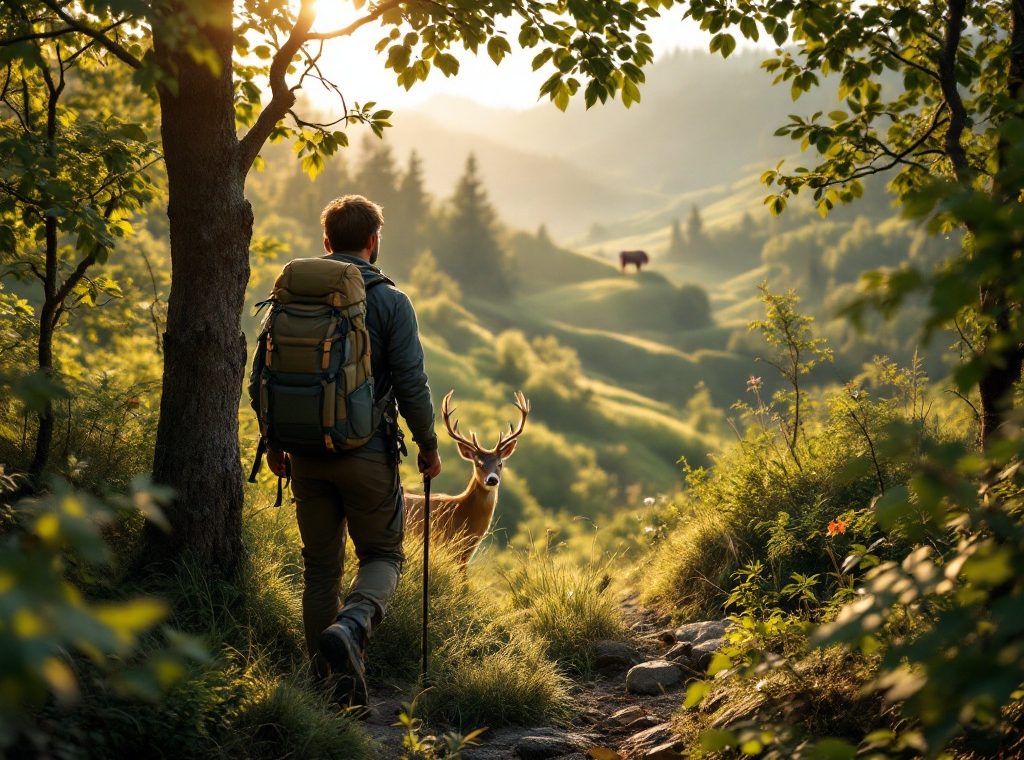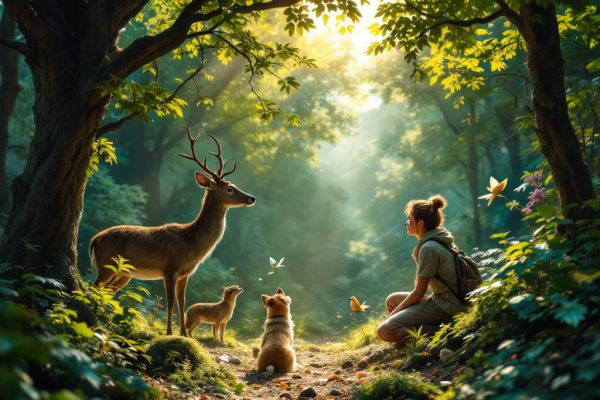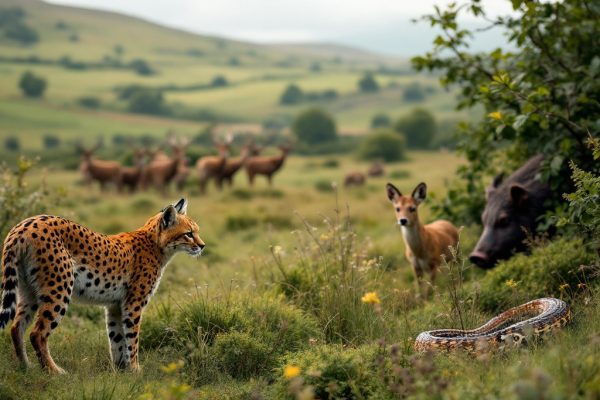How to Protect Yourself From Wild Animals while Hiking in Lothian?
Explore the breathtaking Lothian landscape, but be prepared! From the common deer to the elusive wild boar, Lothian’s diverse wildlife presents unique challenges for hikers. Learn how to prevent encounters, react safely to threats, and hike smartly with our comprehensive guide. Discover essential tips for a safe and enjoyable hiking experience in Lothian’s wild spaces. Don’t wait, start exploring safely today!
Important information

- Hike with a buddy for increased safety, help, and to deter wildlife.
- Share your hiking plan (route, return time, and contact info) with someone you trust.
- Make noise while hiking to avoid surprising animals. Secure food and scented items in airtight containers or hang them high from a tree.
- Check trail conditions and weather forecasts before you go. Pack essential safety gear, including a first-aid kit, navigation tools, extra food, and water.
- If you encounter an animal, stay calm, do not run, make yourself look big, and speak firmly.
Understanding Wildlife Risks While Hiking in Lothian
Encounter Lothian’s diverse wildlife, from frequently sighted deer, foxes, badgers, and birds to the less common wild boar or bear. While animal attacks are rare, a threatened animal may react unpredictably. Be aware of smaller creatures too; adder bites are venomous, and ticks can transmit diseases. For a safe hiking experience, consult local wildlife guides, attend safety workshops, or contact parks and wildlife organizations to learn about animal behavior.
Common Wild Animals in Lothian
Lothian offers a diverse range of wildlife. You can encounter familiar creatures such as deer, foxes, badgers, and various bird species, as well as more elusive animals like wild boar and wildcats. While deer sightings are relatively common, remember that these animals can be easily startled. Wild boar, though fascinating, can be dangerous if provoked, especially when protecting their young. For the safety and well-being of both yourself and the animals, it is crucial to maintain a safe distance at all times.
Potential Dangers and Safety Awareness
Be aware of wildlife, as unexpected encounters can be dangerous. Staying alert to your surroundings will help ensure your safety.
Essential Safety Tips for Hikers
Hiking with a friend significantly increases your safety. In case of an accident, they can provide immediate assistance and call for rescue. Studies show solo hikers require rescuing more frequently. A group also deters wildlife, which tends to avoid crowds. Hiking with a friend offers valuable support on challenging trails. Sharing the experience makes it more enjoyable.
Inform someone of your hiking plans. Share your intended route, estimated return time, and contact information. This ensures someone can alert authorities if you don’t return as planned.
Provide details about your vehicle. Include the make, model, and license plate number, as well as your parking location.
Pack and familiarize yourself with a map, compass, or GPS device.
Before your hike, research trail conditions. Check recent trip reports for potential hazards like trail closures or wildlife activity. Resources like AllTrails and local park websites offer valuable trail information.
Consult the weather forecast and avoid hiking during storms or extreme heat. Pack essential safety gear: a first-aid kit, navigation tools, extra food, and water.
Why You Should Avoid Hiking Alone
Hiking with a companion significantly increases your safety. In case of injury, they can provide immediate assistance and summon help. Additionally, their presence can deter wildlife. A hiking partner truly makes all the difference. Here’s why:
- Enhanced Safety: A companion can offer immediate help if you’re injured or lost, potentially preventing a minor incident from becoming a major emergency.
- Wildlife Deterrent: Animals are less likely to approach a group of hikers, improving your safety in areas with wildlife.
- Assistance and Support: From helping with navigation to sharing the load, a partner can make your hike less strenuous and more enjoyable.
Letting Someone Know Your Location
Before hitting the trail, inform a trusted friend about your hiking plans. Share your intended route, expected return time, and the names of your companions. Enhance your safety by using a GPS tracker to share your live location or consider carrying a personal locator beacon (PLB) for emergencies. Leave a copy of your plan in your car as well. These precautions can significantly expedite rescue efforts should any unforeseen delays or incidents arise.
Inform a friend about your hiking plan. Share your route, return time, and companions’ names.
Use a GPS tracker to share your live location. Consider a personal locator beacon (PLB) for emergencies.
Leave a copy of your hiking plan in your car.
Checking the Safety of Trails
Trail safety is paramount. Before heading out, review recent trail reports and check with local wildlife authorities for any warnings. Be observant for signs of wildlife, such as tracks and droppings. Consider potential hazards like overgrown vegetation or unstable terrain, which can startle animals and increase your risk of an encounter. If you have any concerns, contact park rangers or local authorities.
How to Prevent Encounters with Wild Animals
- Make noise while hiking—talk, clap, or sing, this allows animals to move away safely. Attaching bells to your gear provides an additional warning signal.
- Keep pets leashed to prevent them from wandering and chasing wildlife, this protects both your pet and wild animals.
- Store food and scented items, like toiletries, in airtight containers. For added safety, use a bear canister or hang them high from a tree branch. Properly disposing of trash also minimizes attracting animals.
Using Noise as a Deterrent
Talking, singing, or clapping alerts animals to your presence, reducing the chance of surprising them. This is especially important for bears and bobcats. Making noise allows both you and the animals to avoid each other near thick bushes or blind corners.
Keeping Pets on a Leash
A leash safeguards your pet and native wildlife. It prevents them from chasing animals like deer, badgers, and foxes, who might feel threatened and react defensively, harming both creatures. Additionally, a leash prevents pets from getting lost in unfamiliar terrain. So, leash your pet for their safety and the well-being of local wildlife.
Securing Your Hiking Gear
Store food and scented gear in airtight containers or hang them from a tree branch. This will help protect both wildlife and yourself.
If hanging items, ensure the branch is 10 feet high and 4 feet from the trunk. This keeps both animals and hikers safe.
Practice proper waste disposal. This is essential for safety.
Store food away from your tent. This further minimizes wildlife encounters.
Animal-Specific Safety Measures
Encountering a Bear
In bear country, carry bear spray and maintain a safe distance. If you see a bear, back away slowly and avoid direct eye contact.
Encountering a Cougar
If you encounter a cougar, stay calm, but ensure you have an escape route. Make yourself appear large and speak to the cougar firmly.
Encountering a Snake
A snakebite kit is a crucial safety item. If bitten by a snake, remain calm and seek immediate medical attention.
Dealing with Bears: Carrying Bear Spray and Keeping Distance
When encountering bears, maintain a safe distance, especially from mothers with cubs. Carry bear spray and use it if a bear approaches by spraying it directly in the face.
Safety Around Cougars: Staying Calm and Giving an Escape Route
If you encounter a cougar, remain calm and maintain eye contact. Slowly back away while making yourself appear larger, for example, by raising your arms. Avoid turning your back on the cougar and ensure it has an unobstructed escape route.
Handling Snake Encounters: Carrying Snakebite Kits
Carry a snakebite kit and know how to use it, along with understanding basic snakebite first aid.
Learn about snake behavior to minimize bite risks.
Refrain from reaching into areas where snakes may hide, such as under rocks, logs, or other concealed spaces.
Never reach where you cannot see.
Emergency Response During Wildlife Encounters
When encountering wildlife, remaining calm is crucial. Avoid running, as this might provoke a chase. Instead, retreat slowly while maintaining eye contact with the animal. Try to appear larger by raising your arms or spreading your jacket. Speak to the animal in a firm voice. If it continues to approach, create a loud noise by shouting or banging objects together to frighten it off.
Remain calm. Sudden movements or running can trigger an animal’s predatory instincts.
Avoid running. Retreat slowly and deliberately while maintaining eye contact with the animal.
Appear larger. Raise your arms or spread your jacket to make yourself seem more imposing.
Speak firmly. Use a firm voice to address the animal, which can sometimes deter it.
Make noise. If the animal continues to approach, create a loud noise by shouting or banging objects together to scare it away.
Staying Calm and Not Running During an Encounter
Remain calm to avoid triggering a chase response in animals like cougars and bears.
Slowly back away while maintaining eye contact and speaking in a calm, yet firm voice.
Make yourself appear larger to deter the animal.
Avoid turning your back and never run.















